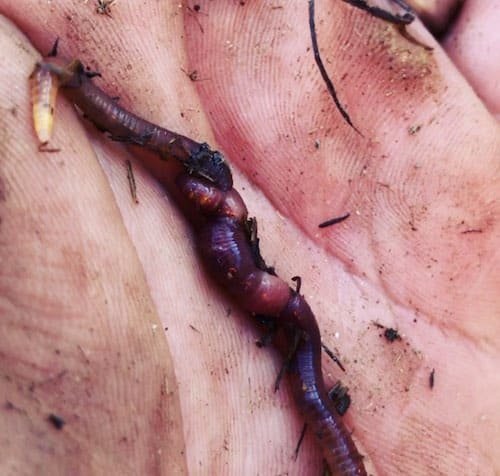Discover Why Lake Hickory Bait is the Best Choice for Yard Care
Discover Why Lake Hickory Bait is the Best Choice for Yard Care
Blog Article
Open the Keys of Red Wigglers: Your Guide to Composting Success
The assimilation of red wigglers into composting techniques provides a significant chance for improving dirt wellness and promoting sustainability. Recognizing their demands and actions is important for enhancing their capacity, from establishing up a suitable worm bin to feeding them the ideal products.

What Are Red Wigglers?
(Red Wiggler Express)Red wigglers, clinically known as Eisenia fetida, are a varieties of earthworm largely made use of in composting as a result of their exceptional ability to disintegrate organic matter successfully. These worms are characterized by their reddish-brown pigmentation and a fractional body, typically gauging in between 3 to 4 inches in length. Unlike various other earthworm varieties, red wigglers thrive in rich, organic environments, making them ideal for vermicomposting systems.
Belonging To The United States And copyright, they are often discovered in rotting fallen leaves and compost heaps, where they play a critical duty in nutrient recycling. Their adjustment to living in a wet, aerobic environment allows them to take in large quantities of organic waste, breaking it down right into nutrient-rich castings that boost soil wellness.
Red wigglers duplicate rapidly, with a solitary worm qualified of generating a number of cocoons each week, each containing numerous hatchlings. Understanding the biology and habits of red wigglers is important for maximizing their possibility in composting applications.
Advantages of Utilizing Red Wigglers
Using the power of red wigglers in composting offers countless benefits that enhance soil health and wellness and advertise sustainable waste management. These impressive organisms successfully break down natural matter, changing kitchen area scraps and lawn waste right into nutrient-rich vermicompost. This finished product is incredibly beneficial for plant development, as it boosts dirt framework, increases dampness retention, and improves vitamins and mineral accessibility.

(Lake Rhodhiss Bait)In addition, the existence of red wigglers in your composting system can increase the composting process, generating top notch compost in a fraction of the moment contrasted to traditional techniques. The castings produced by these worms are also including useful bacteria that better enrich the dirt ecosystem.
Setting Up Your Worm Bin
Developing an efficient worm container is an uncomplicated process that can considerably improve your composting efforts. The very first action is picking an appropriate container. Worm bins can be made from plastic storage space containers, wooden boxes, or commercially offered worm bins. Ensure the bin has appropriate water drainage and air flow holes to maintain optimal moisture degrees and airflow.
Following, prepare the bed linen product, which serves as the worms' habitat. A mix of shredded newspaper, cardboard, and coconut coir functions well, supplying a comfy setting for the worms.

Feeding Your Red Wigglers
To ensure the wellness and efficiency of your red wigglers, it is necessary to supply them with a well balanced diet regimen that meets their nutritional needs. Red wigglers flourish on a varied range of organic materials, which not only provide essential nutrients however additionally advertise effective composting.
Begin by including kitchen area scraps such as vegetable peels, fruit cores, and coffee premises. Stay clear of citrus fruits, onions, and garlic, as these can be destructive to worm health and wellness. Furthermore, introduce shredded paper, cardboard, and dry fallen leaves to produce a well-aerated environment.
Feeding frequency must be monitored; generally, worms can consume half their body weight in food weekly. It is vital to stay clear of overfeeding, as excess food can bring about unpleasant odors and bring in insects. A great practice is to include food in percentages, permitting worms to refine it prior to introducing a lot more.
Preserving dampness levels is additionally essential; the bedding needs to be wet but not soggy. Be certain to routinely examine the temperature and pH levels of the container to guarantee an ideal setting for your red wigglers, eventually improving their composting efficiency.
Harvesting and Making Use Of Garden Compost
An effective composting process with red wigglers culminates in the abundant, dark compost referred to as vermicompost, which can substantially boost soil health and wellness and plant development. Gathering this nutrient-dense material normally happens every three to 6 months, depending on the dimension of your system and the amount of raw material being refined.
To harvest, delicately different the compost from the worms and any undecomposed materials. One efficient technique involves moving the components of the container to one side and including fresh check my source bed linen and food to the empty room, urging the worms to move. After a couple of days, the compost can be collected from the contrary side.
It is important to make use of vermicompost properly to optimize its advantages. By including vermicompost into your gardening regimen, you not just recycle organic waste however also create a thriving ecosystem that supports sustainable gardening practices.
Verdict
In summary, red wigglers function as outstanding allies in composting initiatives, changing organic waste right into nutrient-rich vermicompost (Red Wiggler Express). Their unique organic attributes and effective waste handling capacities contribute significantly to lasting gardening practices. By recognizing the optimal conditions for their environment, feeding needs, and garden compost harvesting strategies, garden enthusiasts can enhance soil health and promote plant vigor. Accepting vermicomposting not just decreases land fill waste yet also promotes a more environmentally liable approach to gardening and source monitoring.
Report this page